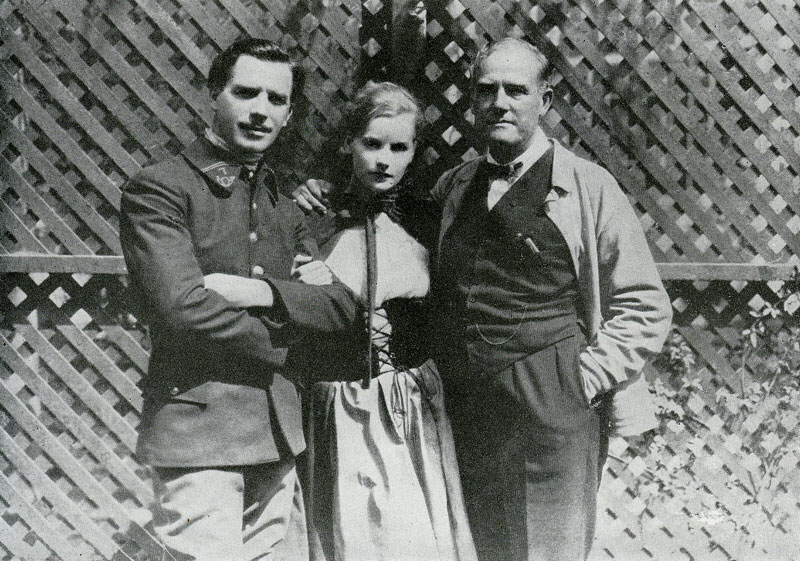In her autobiography, Lillian Gish discusses D.W. Griffith's use of shot length in "The Lonely Villa". Linda Arvidson, wife of D.W. Griffith, in her autobiography "When the Movies Were Young" claims that "The Lonely Villa" was the second film in which Mary Pickford had appeared, her having made her motion picture debut in the earlier "The Violin Maker of Cerona". Mack Sennett had gleaned the plot to "The Lonely Villa" from a newspaper.
Author Stanley J. Solomon, in his volume The Film Idea sees "The Lonely Villa" as only the beginning of the development of new film techniques by D.W. Griffith, almost intimating that there would be a synthesis of Griffith as an autuer and new developments in filmmaking would combine. "Although Griffith was working now with materials that could not be effectively duplicated onstage, 'The Lonely Villa' was not really totally cinematic. Griffith's understanding of spatial relationships was still limited; to get a person from one point to another, Griffith shows him moving there in stages." The passage is particularly refreshing because through it Solomon imparts to us where the title of his volume The Film Idea comes from and how it is his point of departure. He writes,"But Griffith learned quickly that a meaningful narrative must be embedded in a total film idea. Otherwise, when the surface movement is the whole film idea, the camera functions simply as a recording device and most of its expressive possiblilities are relegated to either unimportance or mere technique."
In her volume her volume D.W. Griffith, American film master, Iris Barry sees the film technique used by D. W. Griffith developed quickly during a short period of time, "In The Lonely Villa many scenes begin quietly with the entrance of the characters into the set, significant action follows this slow-paced start only belatedly. In The Lonedale Operator there is no leisurely entrance, the characters are already in mid-action when each shot begins and there is no waste footage- no deliberation in getting on with the story when haste and excitement are what is needed." Barry adds, "At no time did he use a scenario. But there was considerable protest when, quite early in his directorial career, he insisted on retaking unsatisfactory scenes and succedded in gaining permission to do so in The Lonely Villa. Bitzer and others were aghast at his extravagence with film."
Silent Film
D. W. Griffith
Biograph Film Company

Scott Lord on the Silent Film of Greta Garbo, Mauritz Stiller, Victor Sjostrom as Victor Seastrom, John Brunius, Gustaf Molander - the Golden Age of Swedish Silent Film........Lost Films in Found Magazines, among them Victor Seastrom directing John Gilbert and Lon Chaney, the printed word offering clues to deteriorated celluloid, extratextual discourse illustrating how novels were adapted to the screen; the photoplay as a literature;how it was reviewed, audience reception perhaps actor to actor.
Saturday, May 11, 2024
Scott Lord Silent Film: Biblical Drama; Jesus of Nazereth (From The Manger to the Cross,...
It has been noted that "From The Manger to the Cross", directed by Sidney Olcott for the Kalem Company and shot on location in Egypt and Palenstine in 1912 and scripted by actress Gene Gauthier who played The Virgin Mary in the film, owes a debt visually to a Bible illustrated by Joseph Jacques Tissot. Accordingly, the expository intertitles preceding each scene from the Holy Bible introduce the passage with quotations from scripture cited by their respective chapter and verse.
Author W. Barnes Tatum, in his volume Jesus at the movies, a guide to the first hundred years, differentiates between Jesus story films and Christ figure films, Sidney Olcott's "From the Manger to the Cross" belonging to the former, the cinematic Jeusus, a visual form dating back to the passion play. Tatum expands his analysis by conveniently differentiating between the Synoptic portrayal of Christ and the Johannine portrayal. He names the film to be a "silent pageant".
Linda Arvidson, wife of D.W. Griffith, remembers Gene Gauthier in her autobiography "When Movies Were Young". She explains that Gauthier had been a "location woman" for D.W. Griffith who "dug up locations and wrote scenarios." Arvidson writes,"Miss Gauthier's aptitude along the location line did not satisfy her soaring ambition, so she left Biograph for Kalem." Silent Film Silent Film
Linda Arvidson, wife of D.W. Griffith, remembers Gene Gauthier in her autobiography "When Movies Were Young". She explains that Gauthier had been a "location woman" for D.W. Griffith who "dug up locations and wrote scenarios." Arvidson writes,"Miss Gauthier's aptitude along the location line did not satisfy her soaring ambition, so she left Biograph for Kalem." Silent Film Silent Film
Scott Lord Silent Film: The Politician's Love Story (D.W. Griffith, 1909)
The Politicians Love Story is a brialliant, early example of reverse screen direction, using diagnol framing to depict perspective.
Linda Arvidson, wife of director D.W. Griffith chronicled having known Mack Sennett in her autobiography "When Movies Were Young", " 'The Curtain Pole' and 'The Politicians Love Story' started the grumbling young Mack Sennett on the road to fame and fortune. Like the grouchy poker player who kicks himself into financial recuperation,Mack Sennett grouched himself into success." Silent Film D.W. GriffithD Biograph Film Company
Subscribe to:
Posts (Atom)





